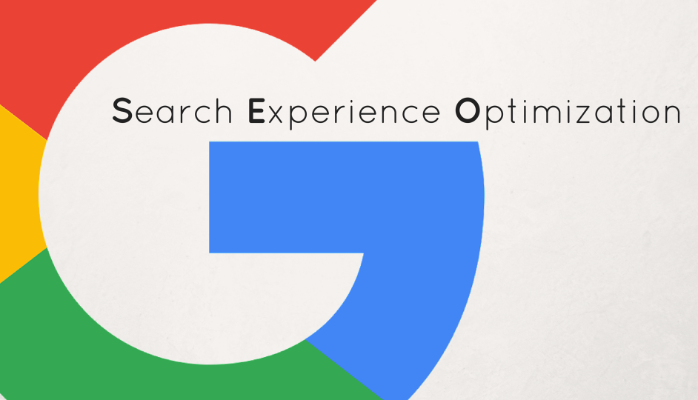
This article originally appeared on The Huffington Post.
Many companies are caught up in search engine optimization, but this approach belongs in the past. In my 15 years working with SEO, I’ve watched the process evolve from a black hat spam tactic into a nuanced, quality-based marketing strategy—and that evolution has only just begun.
New algorithms increasingly account for user behavior metrics, such as site speed, structure and mobile optimization, rather than just trawl for keywords. And marketers must follow suit. It’s time to leave search engine optimization in the past and embrace search experience optimization instead.
Human Experience vs. Machine Experience
Too many marketers still focus exclusively on links and rankings. While these metrics have their place, they’re not the most important elements anymore. Businesses need a more holistic approach that combines traditional practices with new methodologies to place users at the heart of the process.
CURL, which stands for content, user experience, RankBrain and links, are all influential factors in Google’s ranking algorithm. This methodology provides a model framework for optimizing the search experience. The first two CURL factors are fairly self-explanatory: How relevant is the content? And has the website been developed with the user experience in mind?
But RankBrain is a little more technical. This is Google’s latest machine-learning artificial intelligence system, which helps provide relevant search results for users. While the specific elements it considers are unknown, it shows us that Google is transforming its algorithm’s ability to function like a person.
Links are also more complicated than they used to be. Not all links are created equal, and instead of focusing on quantity, it’s time to target quality. A small selection of reputable, relevant and resourceful links is worth a lot more in today’s SEO than an abundance of links.
Creating Unique Customer Journeys
By ensuring a strong, responsive user experience, marketers can increase the likelihood that website visitors will follow a call to action. And with the average conversion rate for U.S. websites at under 4 percent, it’s clear that more needs to be done.
Customer journeys are always morphing and evolving, and each website visitor will create his or her own path. These five steps will ensure the best possible experience:
1. Conduct surveys. Voice of customer surveys are essential. Ask visitors and customers how their experiences could be improved and send out Net Promoter Score surveys to discover how likely they are to recommend you to family and friends. Change your website based on these responses.
My company also conducts exit surveys from specific pages, such as shopping carts or product pages. Based on customer responses, we can direct them to an appropriate notification, offer a discount if the price is too high, start a live chat, or provide upgraded shipping.
2. Optimize the UX. The user experience cannot be ignored. Free products like Crazy Egg can find where visitors click and scroll, while eye-tracking reports uncover where users look, gaze and fixate. As the co-founder of LookTracker, an eye tracking technology company, I have seen first hand how insightful it can be to see through a visitor’s eyes as they navigate a site or app. Likewise, testing with Optimizely can help uncover the strongest website design. These tools all provide insight into how users engage with a website and offer valuable feedback for improvements.
A client of ours had just launched a new website with an unfortunate loss of conversions. Utilizing the above products, we determined where users were overlooking CTAs, shifted the arrangement of the site and tested new layouts. The site saw over 350 percent more searches, a 4.6 percent increase in conversions and a 32 percent rise in monthly sales, just from a few small adjustments.
3. Publish killer content. Content comes in all shapes and sizes. It could be a long-form post that offers authoritative and detailed information, or it could be a video that breaks down a complex issue into easily digestible takeaways. Whatever the content, ensure it presents your business as an expert in the space and offers trustworthy advice. Not only does this help with customers, but with Google as well.
On a recent piece, we had the lofty goal of ranking on Page 1 in Google by Super Bowl Sunday. With the right imagery, videos, headings, keywords and CTAs, the content saw a healthy 188 percent boost in viewership by kickoff.
4. Be available. Customers want information tailored to their needs, and that sometimes means going beyond standard website information. The most responsive websites will offer quick access to a rock-star customer success team via live chat features, ensuring that any gaps in the content are quickly addressed.
Based on Qualaroo surveys for one client, we found that customers were frequently looking to ask questions about a product. Installing a live chat tool on its website not only helped this company improve its user experience but the efficiency of its customer service team.
5. Keep improving. Just as SEO has evolved, marketing overall won’t be the same in 2020 as it is today. Never stop looking for ways to improve your website to meet customer needs. Look at qualitative and quantitative feedback and implement changes responsively.
Every customer journey is unique. While old SEO approaches were focused on machine experience, the new search experience optimization is all about offering value to end users. SEO is about people, not machines. Taking customers out of the one-size-fits-all sales funnel can increase web traffic, improve user engagement and raise conversion rates: all keys to a better bottom line.